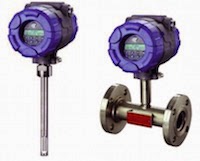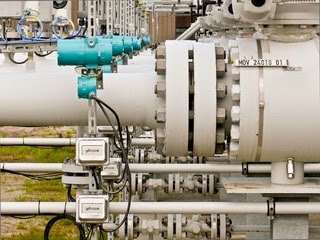 |
| Thermal dispersion level and flow instruments (courtesy of Magnetrol) |
Convective heat is the mechanism of heat transfer for thermal technology level switches based on the principle that a liquid has a thermal conductivity far greater than the thermal conductivity of its corresponding vapor. When the sensor is dry, there is a temperature difference between the two sensors. When fluid comes in contact with both RTDs, there is a cooling effect as the liquid absorbs the heat from the self-heater RTD. The resulting temperature differential drops, and creates a point for high level reference. When the level drops and the sensor goes dry, the temperature difference increases again. The instrument electronics senses the increase in temperature difference and provides a low level reference.





